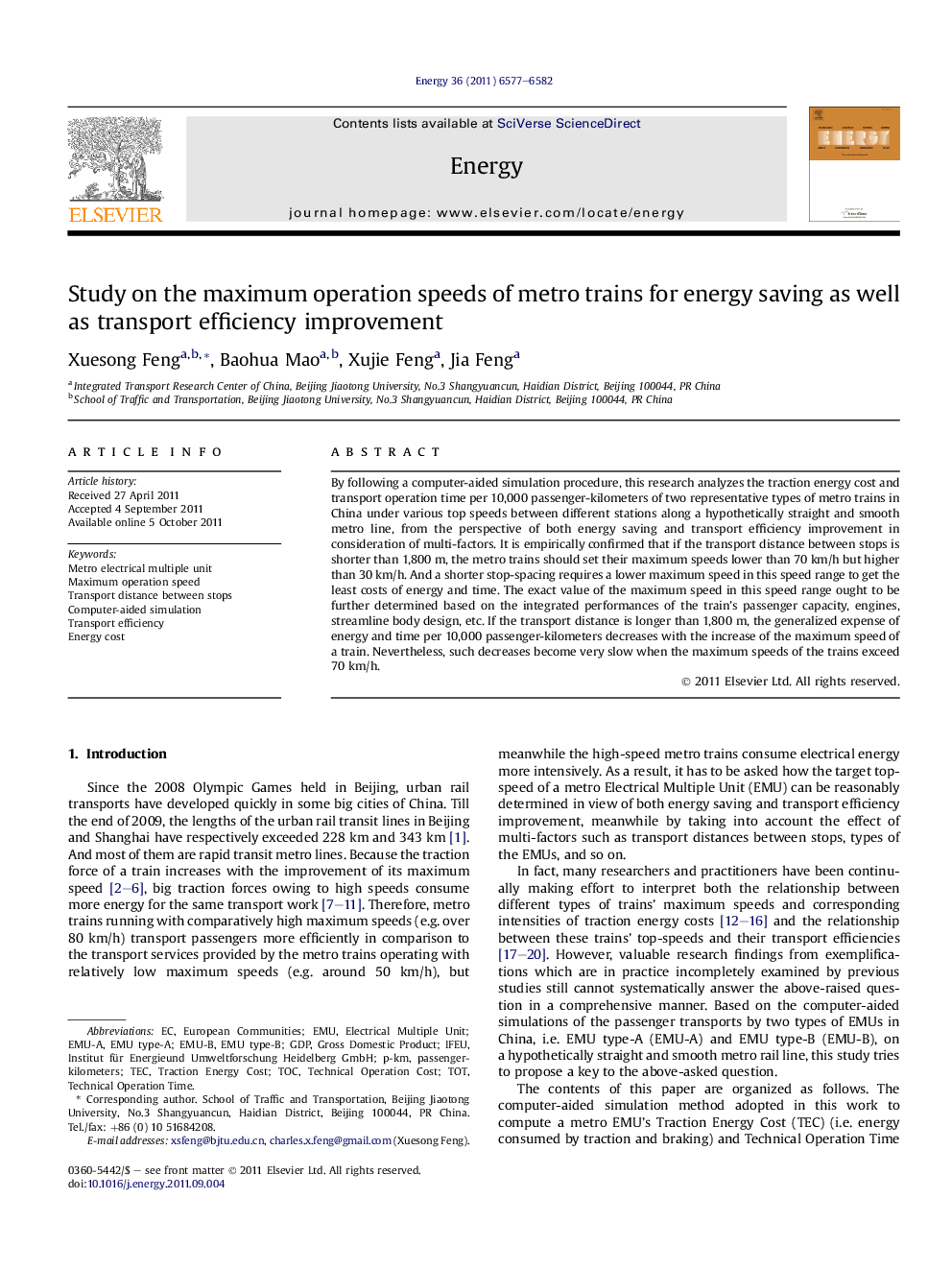| Article ID | Journal | Published Year | Pages | File Type |
|---|---|---|---|---|
| 1734397 | Energy | 2011 | 6 Pages |
By following a computer-aided simulation procedure, this research analyzes the traction energy cost and transport operation time per 10,000 passenger-kilometers of two representative types of metro trains in China under various top speeds between different stations along a hypothetically straight and smooth metro line, from the perspective of both energy saving and transport efficiency improvement in consideration of multi-factors. It is empirically confirmed that if the transport distance between stops is shorter than 1,800 m, the metro trains should set their maximum speeds lower than 70 km/h but higher than 30 km/h. And a shorter stop-spacing requires a lower maximum speed in this speed range to get the least costs of energy and time. The exact value of the maximum speed in this speed range ought to be further determined based on the integrated performances of the train’s passenger capacity, engines, streamline body design, etc. If the transport distance is longer than 1,800 m, the generalized expense of energy and time per 10,000 passenger-kilometers decreases with the increase of the maximum speed of a train. Nevertheless, such decreases become very slow when the maximum speeds of the trains exceed 70 km/h.
► We simulate traction processes of different types of metro trains. ► We analyze the trains’ top-speeds, energy costs and transport efficiencies. ► Making stop-spacing short increases unit transport energy cost especially for a high top-speed. ► Meanwhile, unit transport efficiency decreases for high top-speeds. ► Top-speeds should be decided based on stop-spacing distance level of and train’s type.
